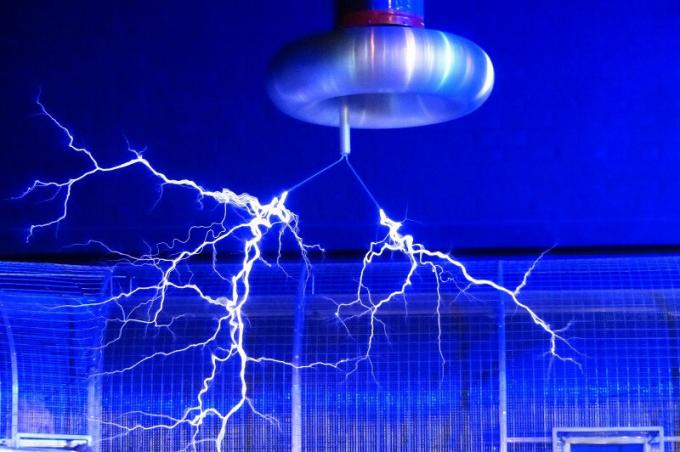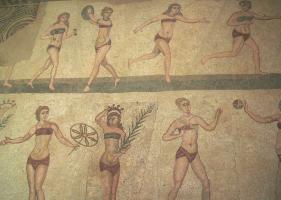The 2 types of electricity (explained)
Electricity is the energy that moves our world. Contemporary society could not live without electricity, since our energy is fed by it. electronic devices, washing machines, refrigerators and the most basic of the objects of our lives, the light bulb.
Although electricity is no longer so mysterious in the 21st century, when it was "invented" it was a true revolution, in fact, it motivated the start of the second industrial revolution.
How many types of electricity are there? This is what we are going to find out next.
- Related article: "The 11 types of chemical reactions"
What is electricity?
Electricity is a type of energy that results from how matter is formed. Substances are made up of atoms, little balls that have subatomic particles. At its center we find neutrons and protons, while spinning around it we find electrons. It is these last particles that are responsible for electricity, components of negatively charged atoms.
Electrical energy is produced by the flow of electrons in a conductive material,
generally a metal. This energy has been fundamental to contemporary life as we know it, since it is the energy that makes all our devices work electronics, from the most complex such as the computer or mobile with which you can read this article to the simplest, such as the light bulb of our bedroom.Electricity is a phenomenon that is studied by electromagnetism, an area of physics. The electromagnetic force is one of the four fundamental forces of nature together with gravity and the weak and strong nuclear forces. Today, electricity for human use is generated, transported, stored and consumed, being transformed in other types of energy useful for modern life, such as thermal, kinetic, chemical and light.
- You may be interested in: "The 5 types of chemical bonds: this is how matter is composed"
Types of electricity
Although we could talk about different types of electricity depending on the way it is produced or the use that is done with it in the end, there are really only two main types of electricity: dynamic and static.
1. Static electricity
As its name suggests, static electricity It is one in which the current does not flow and, as a consequence, there is no magnetism. This type of energy is the one that is produced in non-conductive materials, where the induced electrical charge remains at rest. That is, electricity "does not move" because no current can flow in non-conductive materials.
This type of electricity is produced in insulating materials that, when rubbed together, become electrically charged. This can be verified by means of a simple homemade experiment: if we take a rubber balloon and a piece of plastic, two conductive materials, and rub them together, it gives an interesting situation. One loses some electrons, while the other ends up gaining them. For this reason the balloon is able to stick to a wall, while the plastic piece is able to attract small pieces of paper.
Another example is taking a piece of amber and a woolen cloth. When these two objects rub against each other, an electronic imbalance is produced in the amber that gives it an electrical charge. The rubbing causes electrons to travel from the cloth to the amber, causing the amber to become negatively charged and the cloth positively.
This charge will reside in the amber until it is balanced. The substance that loses electrons becomes positively charged, while the one that gains them becomes negatively charged. These charges are temporary and remain on the surface of the material.
- Related article: "The 15 types of energy: what are they?"
2. Dynamic electricity
Dynamic electricity is produced when electrons are released from one substance and flow into another material., as is the case with the electricity that comes to us through our electric company. Electrons travel through an electrical circuit made up of conductive materials, such as the metal inside the cables.
Electric current is the flow of electrons through a material and can be of two types:
- Direct current (DC): electrons flow in only one direction, as in photovoltaic panels.
- Alternating current (AC): electrons continuously change their direction from positive to negative, this being the type of electricity that is supplied in our homes.
Dynamic electricity It is the one we use the most in our day to day life and is responsible for the fact that humanity has been able to advance at an overwhelming rate in the last 150 years. Thanks to this type of energy, specifically alternating current, the second industrial revolution could have originated.

- You may be interested in: "Electrophobia (fear of electricity): symptoms, causes and treatment"
Electromagnetic field
Electromagnetic fields are phenomena that occur due to electromagnetic interaction. These types of fields are made up of a combination of different phenomena:
- An electric field produced by an immobile electric charge
- A magnetic field, produced by the movement of electric charges (current)
Electromagnetic fields are generated locally by any distribution of electrical charge and electrical current that varies over time. The electromagnetic field propagates in space in the form of electromagnetic waves. An electric field can create a magnetic field like in an electromagnet. Conversely, a magnetic field can also cause an electric field, as in a generator.
- Related article: "The 75 best phrases of Nikola Tesla"
Electricity in nature
There are several phenomena in nature in which we can find electricity. Next we are going to talk about a few phenomena in which we can find electricity naturally.
1. Lightning bolts
Lightning that can be seen during a storm are produced due to the imbalance of the electrical potential between the atmosphere and the ground.
The friction of clouds and water droplets with the air causes it to be charged with electrons, giving rise to static electricity. As a result of the whole process, the electricity that is stored in the clouds is released through a rapid and violent discharge in the form of lightning.
- You may be interested in: "Electrostatic pressure: what is it and what are its characteristics"
2. Bioelectricity
Human beings manufacture electricity artificially, but this does not mean that there are no animals that have the ability to produce this type of energy naturally. Some animals are capable of generating electric fields for defenseA well-known example being the electric rays and some species of eels.
Others, on the other hand, can perceive the magnetic fields generated by the electric charge inside their bodies and thus detect their prey, as is the case of sharks with their blisters of Lorenzini. Nevertheless, what most animals have in common is that we have nerve impulses with which our nervous system works, which are a universal example in the animal kingdom of bioelectricity.
- Related article: "Action potential: what is it and what are its phases?"
3. Terrestrial magnetosphere
The earth has a magnetosphere, a magnetic field that is detected by compasses and that is produced by rotational motion. of our planet because its heart, the inner core, is made of iron. It is thanks to this magnetic field and the particles of different substances that reach us from the Sun that we can observe the northern and southern auroras at the poles.



